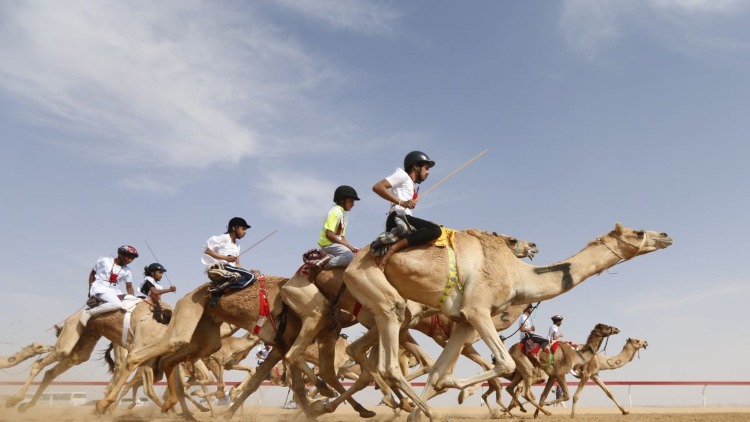Since antiquity, camels have been deeply rooted and cherished in Arab culture. Historical record chronicles ancient nomadic Arabic poems portraying the strength, might, and delicate details of camels and herds of camels. The devout care for this animal even generated an extensive lexical variety of words for camels that exceeds a thousand words. Camels were the pride of Arabs, and their heritage lives on till this day in different forms. From camel beauty pageants, enormous markets, even genetic cloning, it’s an understatement to say that the relationship of Arabs with camels is anything less than devout fascination.
History of Camel Racing

In more ancient times, camel racing used to be the focal point and most anticipated event of festivities, like weddings and ceremonies.
As time went by, it took on more organized forms in multiple areas, mainly Saudi Arabia, Oman, and the UAE. The usual camel racing season takes place between October to April of each year when the weather is more tolerable. But raving is still popular in off-seasons.
Nowadays, camel racing is not exclusive to the Arab peninsula, giant camel races take place in Australia with international attendance, and the ones in Arabia remain formidable. Hundreds of camels participate with a decent sum of money on the line. In Dubai, camel races are free to attend, but booking is necessary for they are massive tourist attractions. The biggest camel race in the UAE is held annually and takes place at Al Marmoum camel racing track. The winners get a hefty 80 million Dirhams, not to mention the phenomenal increase in price value of their camels, which usually get snagged by members of the royal family.
Debates About the Ethics of Camel Racing
When it comes to animals racing, the question of exploitation and maltreatment is always front and center. For instance, camel markets such as Birqash camel market in Giza are infamous for animal rights violations. And the act of racing and training animals for purposes other than their natural ecological roles is also highly controversial. Another issue is that of the jockeys, the camel riders that navigate and race the camels themselves. The issue was that they were usually children due to their light weight. This was considered by many as child abuse and just as outrageous as camel racing itself. But technology served as a replacement to child jockeys, and many governments stepped in and banned child jockeys opting for electronic/machine jockeys instead


